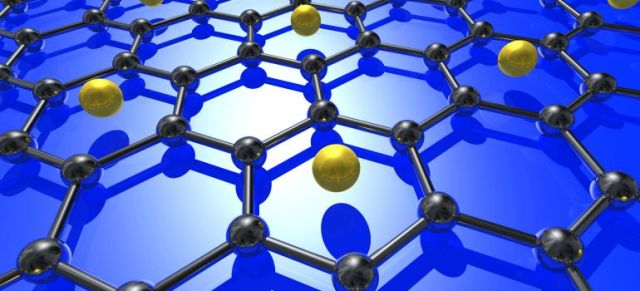A team of researchers has successfully developed the first-of-its-kind superconducting graphene sample by applying a layer of lithium atoms, making graphene even more exceptional.
 Researchers add lithium to graphene to create superconductivity. Credit: Andrea Damascelli.
Researchers add lithium to graphene to create superconductivity. Credit: Andrea Damascelli.
Superconductivity has already been seen in intercalated bulk graphite i.e., 3D crystals consisting of a layer of alkali metal atoms,based on the graphite used in pencils. However, inducing superconductivity in single-layer graphene has so far not been achieved.
“This first experimental realization of superconductivity in graphene promises to usher us in a new era of graphene electronics and nanoscale quantum devices,” says Andrea Damascelli, Director of UBC’s Quantum Matter Institute and leading scientist of the Proceedings of the National Academy of Sciences research detailing the breakthrough.
Graphene is made up of a single layer of carbon atoms in a honeycomb pattern. It is 200 times stronger than steel by weight. Scientists not only want to analyze graphene’s physical properties, but also are keen on using graphene to develop very fast semiconductors, sensors, transistors and transparent electrodes.
“This is an amazing material,” says Bart Ludbrook, a former PhD researcher in Damascelli’s group at UBC and the first author of the PNAS paper. “Decorating monolayer graphene with a layer of lithium atoms enhances the graphene’s electron–phonon coupling to the point where superconductivity can be stabilized.”
Graphene has always raised a great deal of technological and scientific interest. Therefore, the ability to induce superconductivity in single-layer graphene has the potential to impact numerous cross-disciplinary areas.
Financial reports reveal that the graphene market worldwide touched $9 million in 2014, with electronics, semiconductor, energy, battery and composites industries achieving the most sales.
The researchers created the lithium-coated graphene at ultra-low temperatures of -267 °C, or 5 K, in ultra-high vacuum conditions, thereby accomplishing this breakthrough.
The team also included scientists from the Max Planck Institute for Solid State Research through the joint Max-Planck-UBC Centre for Quantum Materials.